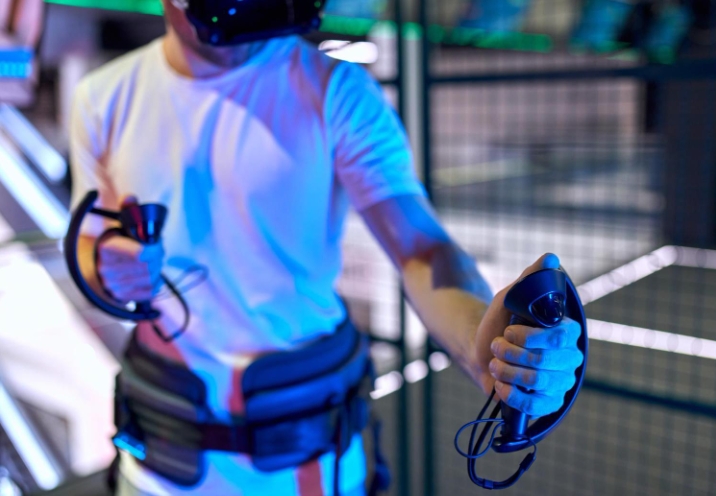
The line between professional sports facilities and home training spaces is becoming increasingly blurred. Once limited to elite athletes with million-dollar budgets, high-precision sports technology is now accessible to enthusiasts around the world. Motion-capture sensors, AI-driven coaching, and high-definition simulation systems are transforming garages, basements, and living rooms into performance labs.
Products such as 4K golf simulator projectors for sale exemplify this trend. What was once a niche market for golf professionals has evolved into a mainstream industry where athletes, from weekend players to rising juniors, can practice in hyper-realistic virtual environments that mirror pro-level conditions.
A New Era of Immersive Sports
Indoor sports technology has advanced at a pace few anticipated. Golf simulators, cycling trainers, and connected treadmills now integrate 4K or even 8K projection, real-time biomechanical feedback, and cloud-based analytics. These innovations allow users to track performance metrics like swing speed, stroke consistency, or power output, tools once exclusive to elite training centers.
The pandemic accelerated adoption, forcing both professionals and amateurs to rethink training access. Global supply chain research from Reuters found that sales of home fitness and simulation equipment rose by over 60% between 2020 and 2023, with golf, cycling, and racket sports leading the growth. This momentum hasn’t faded as restrictions eased. Instead, manufacturers have doubled down on the home-training segment, embedding artificial intelligence and advanced optics into compact, consumer-grade systems.
The result: a democratization of sports science that was once confined to Olympic facilities and professional clubs.
How Professionals Are Adapting the Same Tools
Even professional teams are increasingly adopting consumer-level simulation hardware for supplemental training. Golfers, for instance, use projection-based simulators to maintain swing rhythm between tournaments. Football and baseball players now use smart video walls and virtual reality to study opponents’ tendencies.
These systems offer flexibility and portability that full-scale facilities can’t. Coaches can record, replay, and analyze thousands of repetitions in controlled conditions, eliminating variables like weather and light. For athletes recovering from injuries, simulators provide low-impact environments that preserve form and muscle memory without physical strain.
According to sports technology consultant David Lin, “The biggest shift isn’t the technology itself, but who has access to it. The same biomechanical data used by professional golf coaches five years ago is now available on an app paired with a consumer-grade camera.”
The Economics of Accessibility
The appeal of indoor sports technology lies not only in its sophistication but in its falling price. Five years ago, a golf simulator setup capable of reproducing accurate ball trajectory and spin could cost more than $50,000. Today, mid-range 4K projection systems retail for under $3,000, while entry-level models have dropped below $1,000.
This affordability has triggered a wave of “micro-training studios”, small, technology-driven facilities in urban centers where individuals can book hourly sessions using the same software as pros. Some of these spaces double as social hubs, where friends compete virtually on simulated courses or tracks.
For developers, the convergence of e-sports and physical fitness presents new revenue streams. Interactive golf lounges, indoor cycling bars, and mixed-reality boxing clubs have begun to appear in major cities across the U.S., Europe, and Asia. The business model combines recreation, data analytics, and subscription services, reflecting a larger shift toward experience-based consumption.
AI Coaching and Biomechanical Feedback
At the core of this evolution is artificial intelligence. Modern training systems interpret vast amounts of motion and performance data, from wrist rotation to body posture, and provide feedback in real time. This automation allows users to receive instant correction without human coaches present.
Golf simulators, for instance, can detect micro-deviations in swing path, compare them with pro benchmarks, and recommend precise adjustments. Meanwhile, connected wearables in sports like tennis and running use machine learning to map efficiency patterns over time, helping athletes train smarter rather than harder.
For professionals, AI analysis enhances existing coaching frameworks. For hobbyists, it replaces them altogether. The data doesn’t just track performance, it transforms how players understand their own bodies.
Beyond Training: Data as a Competitive Edge
Sports technology companies increasingly see themselves not as hardware manufacturers but as data firms. Every swing, stroke, or stride generates insights that can improve not just performance but equipment design, marketing, and even broadcasting.
This data-driven feedback loop has profound implications for both athletes and fans. Broadcasting companies now use the same motion data from simulators to enhance live coverage, offering viewers 3D replays and biomechanical breakdowns once only available in labs.
However, the surge in data collection raises questions about privacy and intellectual property. Who owns an athlete’s performance data, the player, the coach, or the platform? Sports law experts warn that as home-training systems become connected ecosystems, data governance will need clear regulation to protect users from unauthorized use or monetization.
Hybrid Training: Blending Home and Club Environments
Perhaps the most compelling development is hybridization, combining the precision of indoor training with the unpredictability of outdoor competition. Many golf professionals now alternate between simulator sessions and on-course play, merging the two datasets to fine-tune their strategy.
Similarly, football clubs use VR environments to train tactical scenarios, while cyclists use smart trainers synced to live GPS routes. Indoor doesn’t replace outdoor; it augments it.
The global sports market increasingly views hybrid capability as the gold standard. Athletes who can train anywhere, at any time, without sacrificing accuracy or realism, gain an undeniable advantage.
What the Future Holds
As processing power grows and prices continue to fall, experts predict that home sports environments will become as common as home offices. Future systems may integrate full-body motion capture with haptic feedback, enabling users to feel the resistance or texture of simulated surfaces.
Developers are already testing 8K projection combined with immersive lighting that reacts dynamically to motion. Within a few years, home simulation could rival real-world sensory fidelity. The only limits may be space, and imagination.
From Luxury to Lifestyle
Just as smartphones transformed communication, indoor sports technology is transforming athletic culture. What began as a luxury for professionals has become an everyday tool for enthusiasts seeking convenience, feedback, and connection.
Whether it’s a teenager fine-tuning their swing on a budget simulator or a tour professional analyzing ball flight with ultra-high-definition optics, the message is the same: technology has erased the gap between training and access.
And as equipment like 4K golf simulator projectors become more mainstream, the world of sports is no longer defined by stadiums or greens, but by the pixels and data streams bringing them to life indoors.
Media Contact
Company Name: Indoor Golf Outlet
Contact Person: Mr.David
Email: Send Email
Country: United States
Website: indoorgolfoutlet.com





